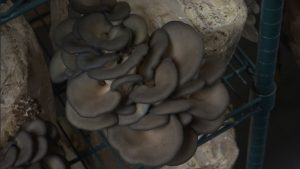WALTON, Ky. — Missy Bays is a fourth generation farmer, and she spends her days working with school field trips, feeding animals and more.
“I absolutely have the best job in the world. When I’m not doing this, educating the kids, I get to ride a tractor,” Bays said.
Part of what the farm does in the fall is host school field trips, where kids can learn about pumpkins and pick one out. But this year’s crop isn’t great in quality, according to Bays. She said they’re not what the farm has seen in the past, and it’s due to lack of rain.
“When the rain comes, that’s what helps the pumpkins. We have more female blooms which makes our pumpkins. This year we didn’t get that, so that’s why there’s more of a pumpkin shortage,” Bays said.
It’s also affecting other areas on the farm, such as the fields. Bays said she’s seen a lot in her time as a farmer.
“But it’s been a while since I can remember it being this dry,” she said.
She said combines in the fields can be risky with how dry and dusty conditions can get, but this year’s drought is dangerous.
“If something catches on fire, these fields are going to go up,” Bays said.
The U.S. Drought Monitor reported some areas of the commonwealth have seen less than 2% of the normal rainfall through the month of October. That’s affecting the pumpkins, the fields and even the livestock. The Drought Monitor also says that this time last year, Kentucky wasn’t under any drought.
Bays says even though there hasn’t been much rain this month, she has seen worse.
“We’re having to feed hay rolls right now. That is something we wouldn’t typically have to do. There’s just no grass for the animals to eat,” Bays said.
She said there’s a pond nearby they can get water from to help with hydration relief.
“We are transporting water back here with a tractor or a truck so that everything has plenty of water to drink,” she said.




